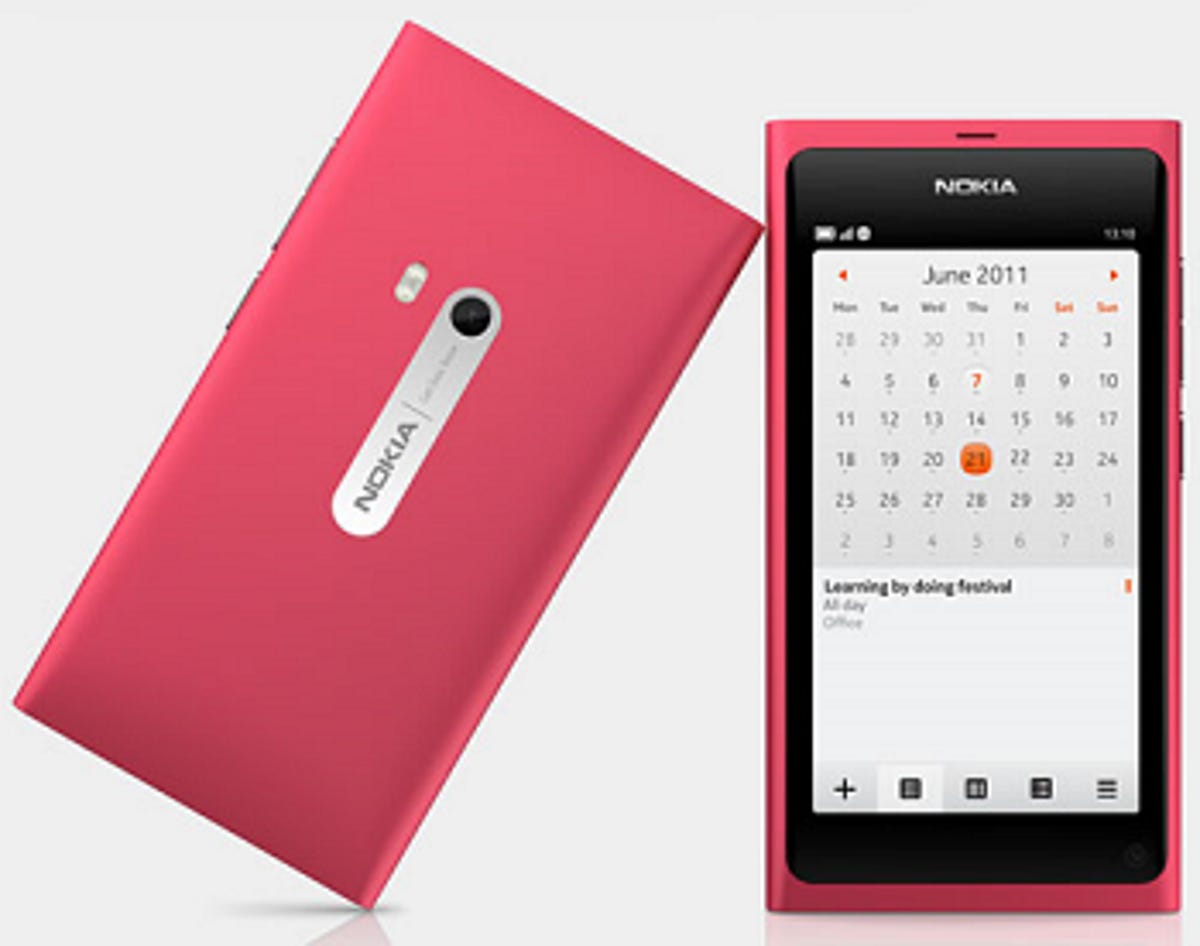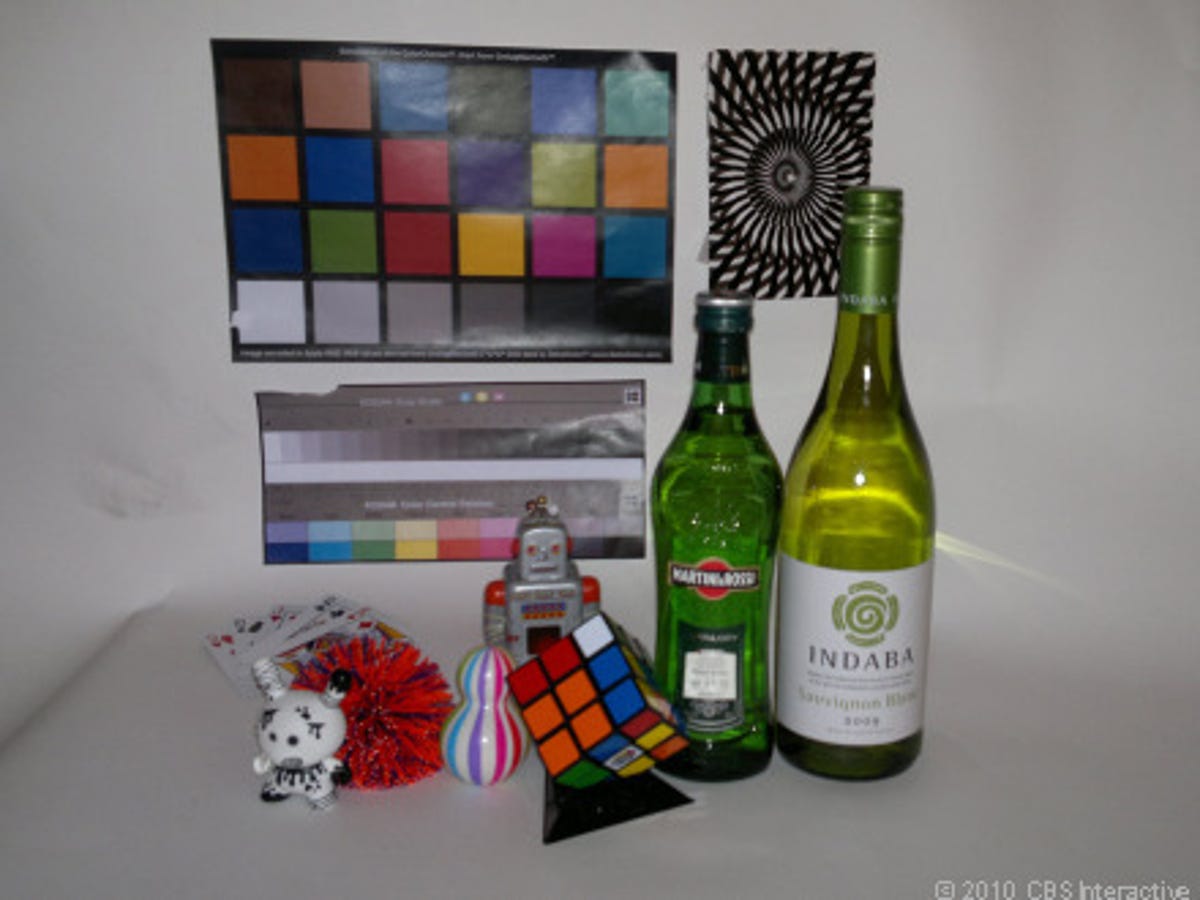We’ve been wondering to ourselves what a Nokia-made Windows Phone would look like ever since Nokia shocked the mobile world by announcing a commitment to Microsoft’s Windows Phone OS.
This week we’ll finally get to find out when the company unveils its Windows Phone road map at Nokia World in London. CNET News’ Maggie Reardon and Stephen Shankland will be there to report on all the news, but until then, we can always imagine what the devices will offer.
For a while, we weren’t sure of the shape, since Nokia runs the design gamut from slates to slide-out QWERTY phones, but we were certain of two things: it would have a great camera and well-considered hardware. Thanks to the Nokia Sea Ray and Sabre leaks, we now have a pretty good idea of the design destined to house the first Nokia Windows Phone.
The Sea Ray’s N9-like design would be a good start for Nokia’s future with Windows Phone, especially with its sharp angles helping it stand out from the current predilection for sloping or rounded corners. In the meantime, until we hear anything official, our postulations also consider how Nokia would fare with keyboards, software, and the competition.
Design
Candy-bar designs and QWERTY keyboard sliders are two of Nokia’s most revisited designs, as seen on the Nokia N8 and the Nokia E7. And why not, when the company does it well? After all, Nokia’s hardware was never the problem; it was the software that lagged, which is why we’re excited to see the company’s partnership with Microsoft. Windows Phone might have its shortcomings, but it’s a very solid platform with a lot of great features that can bring new life to Nokia’s handset business.
It’s a good thing, too, because it would be a shame to see such high-quality designs go to waste. Unlike Samsung smartphones, Nokia’s hardware is rarely too light or glossy, and unlike HTC’s Windows Phones, they don’t usually come across as dense bricks, even though Nokia is also a fan of the aluminum chassis that so often lends a handset its premium look and feel. LG phones can be hit or miss, but they rarely stand out from the crowd; meanwhile, Nokia is no stranger to injecting some tasteful or funky color into its higher-end models, although Microsoft seems to lean toward keeping its smartphones all-black for now and letting its OS tantalize your rods and cones with its flashy hues.


Nokia
The Windows Phone OS was designed for portrait mode, and its virtual keyboard is one of the most accurate we’ve used. Still, QWERTY keyboards are an asset for some, and Nokia has a proven track record for making responsive keyboards. The E7 had one of our favorites, so we’d love to see something similar using Windows Phone.
It would also be great to see a handset with a similar design to the Nokia E73 Mode, which also had a great keyboard, but a slate design like the typical BlackBerry. The challenge there is the smaller screen. The Windows Phone Start screen relies so heavily on the portrait format that it’s hard to imagine it working on a 2.4-inch display. If the two companies can make it work, though, it’d be a worthy addition to the Windows Phone portfolio.
All Windows Phones have three touch-sensitive buttons below the screen for going Back and Home, and for initiating search. Microsoft also requires a 5-megapixel camera minimum and a hardware camera shutter, for snapping photos and waking the camera from sleep mode. There won’t be an external microSD card slot, but beyond those strictures, Nokia more or less has free reign.
The current crop of Windows Phones has a 1GHz processor, but Nokia can get ahead of its rivals by offering the first dual-core Windows Phone. Making its handsets 4G-capable is also inevitable, at least if Nokia wants to sell phones to the world’s most affluent demographic as well as to the budget-minded.
We would expect to see a front-facing camera, which Nokia added to its smartphones long before the practice picked up in the U.S. We also wouldn’t be adverse to a kickstand, which could beat HTC at its own game.
Screen
Screen resolution has undoubtedly been Nokia’s Achilles’ heel, and the one place we think the phone maker could stumble. Though screen quality has always been acceptable, Nokia’s screens tend to blend into the middle of the pack rather than stand out. Samsung’s Super AMOLED Plus display, for instance, makes for sharp lines and rich, vibrant colors that pop from the screen. Microsoft specifies a minimum WVGA (480×800-pixel resolution) for its phones, but the HTC 7 Pro and the HTC Arrive (in truth, the same phone) taught us that by today’s standards, even that respectable minimum is no match for today’s stunners.
If the Nokia N9 is any indication, things might be looking up in this department. The handset features a 16:9 FWVGA (854×480 pixels) AMOLED touch screen, which is better than the Nokia N8’s and E7’s 640×360-pixel displays. Even so, Nokia will need to step up its game in order to compete with the all the superscreens of the smartphone world.
Camera
Camera technology is one of Nokia’s strong suits, and one area where it can soar. Dating back to some of the earliest N series devices, Nokia has always been on the cutting edge of camera technology, incorporating such advanced features as Carl Zeiss optics, ISO settings, and exposure controls. Most recently, the Nokia N8’s 12-megapixel camera wowed us with its superb picture quality. With more and more people grabbing their phones to take pictures on the go, Nokia’s expertise in this area could be a real asset to Microsoft and Windows Phone.


Bonnie Cha/CNET
We’d love to see the aforementioned front-facing camera on all of Nokia’s Windows Phones, and ideally, some devices would have higher-resolution front-facing cameras as well. Very few creep above the VGA or 1.3-megapixel resolutions, but serious video chatters can tell you that the image quality streamed from a lower-resolution camera can make a difference when your image is expanded to full-screen mode on someone’s desktop computer.
Software
Microsoft has pretty much locked down its Windows Phone OS, with the exception of extra app stores that phone makers can build. Still, there’s a perfect opportunity for Microsoft to integrate its acquisition of Skype’s VoIP service into its OS, or at least preload the freestanding software onto phones. While voice calling and video chats are universally useful, Nokia’s highly international reach would make Skype’s appearance particularly noteworthy.
NFC, or near field communication, is another area of opportunity to differentiate among Windows Phone makers, as well as other smartphone platforms. As with front-facing cameras, Nokia was quietly ahead of the curve with implementing NFC chips into its devices. The NFC-capable Nokia Astound is a noteworthy specimen, especially since it was introduced with T-Mobile as more of an entry-level smartphone. We’ll toss Microsoft one more nugget of free advice: NFC payment capabilities would dovetail nicely with the Bing Vision camera-scanning feature in the Mango update, as well as with Bing Shopping.
Final thoughts
We’ve said it before: Windows Phone is taking its time getting off the ground. The Windows Phone Mango update certainly helped, but it could be Nokia’s hardware prowess and international influence that give Microsoft the momentum it needs to make a dent in Android’s dominance.
Most in our industry believe that Nokia and Microsoft will make good partners, each offering its strengths to prop up the other’s weaknesses. Now our patience is starting to fray, and we’re anxious to see the first of Nokia’s Windows Phones take flight, and then another and another after that.
After all, Nokia is facing the end of the road with its MeeGo platform and Symbian. Despite CEO Elop’s promise to support Symbian through 2016, Nokia’s smartphone software is, for all intents and purposes, dead. Microsoft is its future now.
This post was originally published on June 27, 2011, and updated on October 24, 2011.



